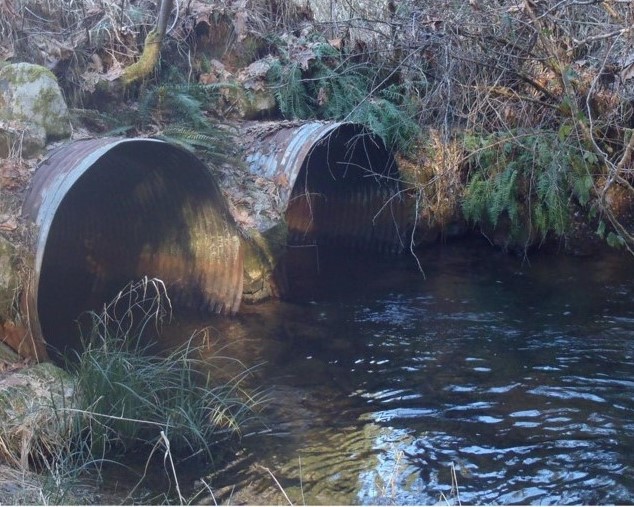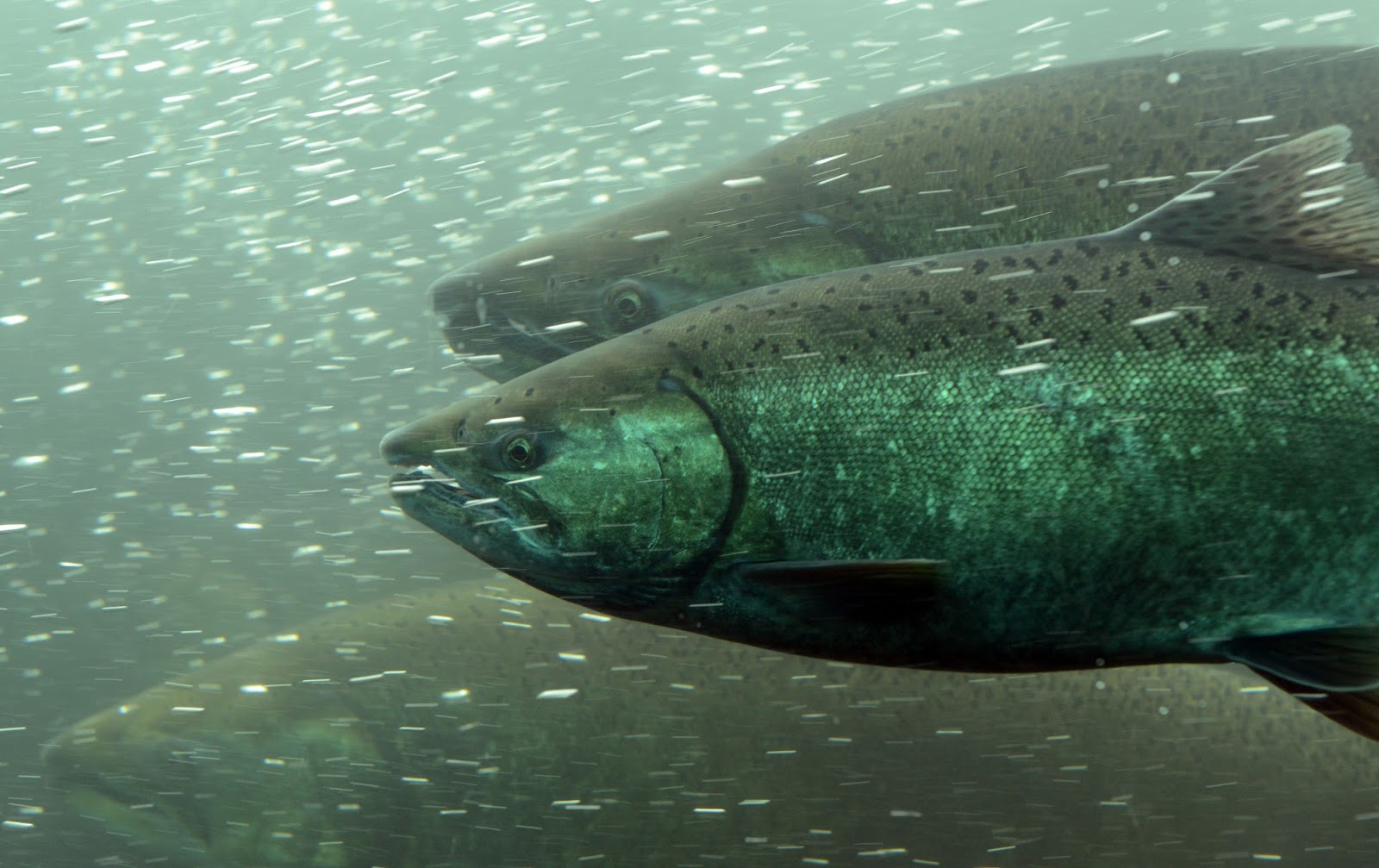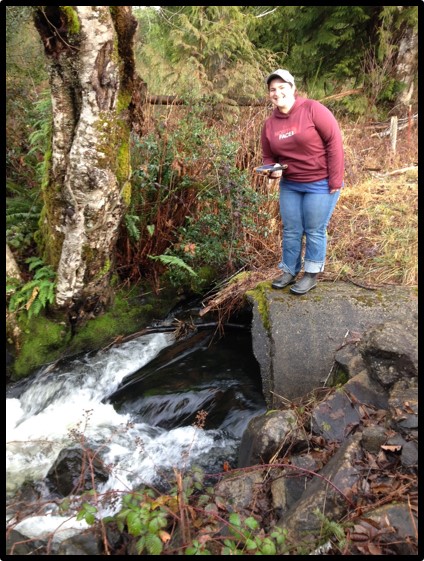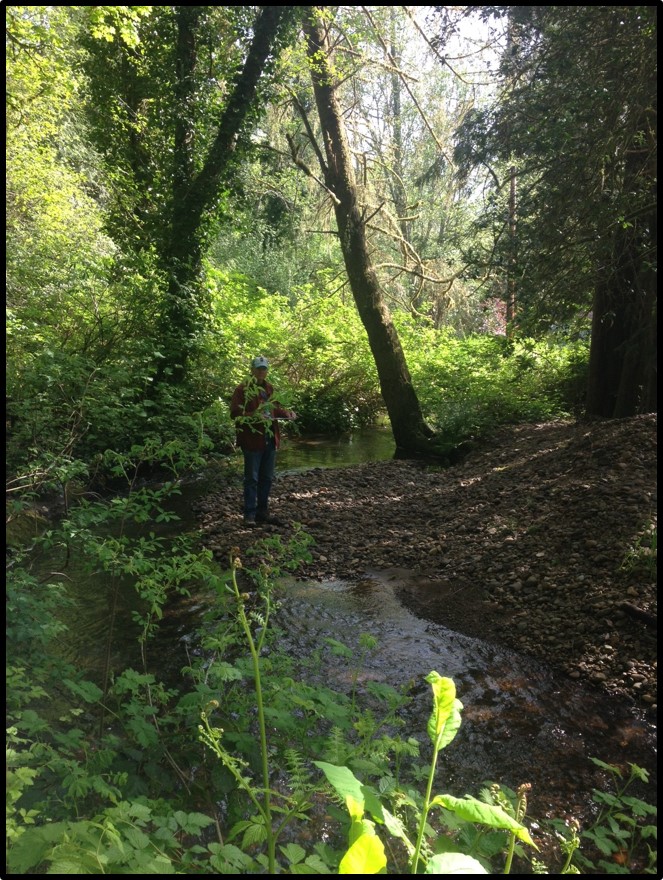While every day is Earth Day at Ecology, this year's celebration falls on Sunday, April 22. It is fitting then that Saturday, April 21, is World Fish Migration Day, a one-day global-local event to create awareness on the importance of open rivers and migratory fish.
In coming months, 17 barrier culverts preventing or reducing the ability for migrating fish to reach 32.5 miles of crucial stream habitat in the Chehalis River basin in Grays Harbor and Lewis counties will be redesigned or reconstructed.
The work is part of the broader, two-pronged Chehalis Basin Strategy to restore degraded aquatic species habitat and reduce the damage from severe flooding in the Chehalis River basin.
Ecology’s Office of Chehalis Basin, the Chehalis Basin Board and Washington State Recreation and Conservation Office are actively working with community groups, tribal governments, and state agencies to put the ambitious collection of potential actions in place.
The $4 million investment builds on work the strategy guided from 2015 through 2017 to provide $5.6 million in grants to improve barriers and provide access to nearly 65 miles in the basin as well as undertake other habitat improvements.
Unique river basin faces flooding, aquatic habitat challenges
The Chehalis River basin covers 2,700 square miles in southwest Washington and drains to the Grays Harbor estuary on the Pacific coast. Besides the Chehalis River, the basin includes the Black, Elk, Johns, Hoquiam, Humptulips, Newaukum, Satsop, Skookumchuck, Wishkah, and Wynoochee rivers, and their tributary streams.
Uniquely fertile and abundant, the Chehalis basin has suffered for decades from devastating flooding — five of the largest floods in the basin’s history have occurred in the last 30 years. In addition, the Chehalis’ once strong salmon runs are a fraction of their historic levels.
Projects bolster two-pronged strategy: Reduce flood damages, improve aquatic habitat
Fish passage improvement projects in Grays Harbor County will open important habitat areas in Bush, Geissler and Sand creeks and a smaller Chehalis River tributary flowing under Mattson Road. In Lewis County, the projects will boost fish access in Berwick, Frase, and Prairie creeks.
Migrating Chinook salmon.
“Undersized and poorly aligned culverts — the pipes that go under roads — are one of the greatest limitations to salmon productivity in many of the Chehalis’ tributaries. These recently funded projects will allow streams to function naturally again, providing the conditions fish need,” Harma said.
The non-profit community group focuses on creating healthy salmon habitat by identifying and implementing voluntary on-the-ground aquatic restoration and protection projects. The projects, she said, also can have a dual benefit.
“Naturally functioning rivers help people, too, because undersized culverts also temporarily back up water. Some of these projects will have the added benefit of helping reduce flooding of our transportation corridors and private lands in the Chehalis basin.”
Grays Harbor County projects to open up 19 new miles to fish
The private, non-profit Chehalis Basin Fisheries Task Force will manage three multi-site projects in Grays Harbor County to improve fish passage to about 15 miles of stream habitat.
Fish barrier at Sand Creek near McCleary. Photo courtesy Chehalis Lead Entity.
-
Open fish passage to about 8.2 miles of upstream forested habitat in Bush Creek near Elma by replacing fish barrier culverts with fully passable structures at three separate road crossings.
-
Correct five fish passage barriers in Sand Creek near McCleary to open up 5.5 miles of forested habitat upstream, including adding gravel substrate and large woody debris to improve fish spawning grounds.
-
Work toward providing unimpeded fish passage by designing and permitting three new culvert corrections on Geissler Creek outside Montesano so fish have access to 1.5 miles of forested stream habitat.
“These three projects are critical. Salmon, steelhead, and cutthroat need unrestricted access to shaded stream reaches to spawn and rear. Upstream areas also serve as important nurseries for juvenile fish during their fresh water life prior to migrating out to sea,” Crumley said. “Providing new access to these important habitat areas on Bush, Sand and Geissler creeks is one way we can help ensure that there will be salmon in the Chehalis basin for coming generations.”
The Grays Harbor Conservation District will redesign the Mattson barrier, a small farm crossing, to open access to 4.1 miles of fish habitat on a small tributary creek near Oakville draining directly to the Chehalis River.
Fish will get access to 13 new miles of Lewis County stream habitat
After Lewis County Conservation District corrects this barrier in Berwick Creek new Chehalis, migrating salmon and trout will have access to 3.3 miles of forested upstream habitat. Photo courtesy Chehalis Lead Entity.
There are two projects slated for Berwick Creek near Chehalis. The Port of Chehalis will design two replacement culverts to make about 1.4 miles of upstream habitat fully accessible to salmon and trout while the Lewis County Conservation District will redesign a blocked culvert to improve fish passage and access to another approximately 3.3 miles of upstream habitat.
“These gains for fish would not have been possible without the groundwork laid by local organizations working on salmon recovery projects in the Chehalis basin for the past 20 years,” said Gordon White, interim director for the Office of Chehalis Basin. “Besides funding and support from our office, these groups are bringing additional funding, experience, and passion to ensure fish remain a permanent part of the basin landscape.”
Multiple entities help guide basin habitat restoration plan
The projects are part of the Chehalis Basin Aquatic Species Restoration Plan to support habitat functions, ecosystem processes, and boosting populations of fish and semi-aquatic species while creating flood and climate-resilient systems that support human needs in the Chehalis basin.
The plan is overseen by a steering committee made up of voting representatives from the Washington Department of Fish and Wildlife, Quinault Indian Nation, and Confederated Tribes of the Chehalis Reservation, and non-voting members from Ecology, Washington Department of Natural Resources, and the Chehalis Lead Entity.





